The village of Marly-le-Roi is not to be missed! The historic and royal heritage of Marly-le-Roi can still be seen in its ancient streets. Its artistic past can equally be appreciated, thanks to its “virtually untouched” landscapes, which inspired the greatest Impressionist painters.
We invite you to follow the trail to learn more about the works of the Impressionist movement, its forerunners and its successors. Take advantage of this walk to explore all the Impressionist paths across Saint Germain Boucles de Seine.
Marly-le-Roi: the “intimate” residence of Louis XIV
On the edge of the great hunting forests, Louis XIV fell under the spell of Marly. For this reason, he asked Jules Hardouin-Mansart to build him a more “intimate” residence than Versailles, in the heart of this village. The town of Marly-le-Roi still boasts a unique heritage, marked by Louis XIV and his successors.
Marly was designed as a “château jardin”. Its designers sought a balance between nature and architecture. Indeed, the creation of exceptional gardens, enlivened by fountains, pools and waterfalls, and the many statues, make Domaine de Marly a unique place. This grand setting was made possible by an incredible machine for its time: the Marly machine. By harnessing water from the Seine, it supplied water to the Sun King’s two residences: Marly and Versailles.
Today, the Musée du Domaine Royal de Marly tells the royal story, explaining its construction, its park and the Machine de Marly. Don’t miss a visit to this incredible place and its wonderful temporary exhibitions.
Royal remains in the village of Marly-le-Roi
The village is full of buildings that bear witness to this royal era, including the church of Saint-Vigor, the kennel (now the town hall), the Count of Toulouse’s mansion, the Maison des Pourvoyeurs du Roy (Royal Outfitters’ House) and the Maison de la Blanchisserie (Laundry House), all located on Place de la Vierge.
Avenue de l’Abreuvoir is one of the oldest streets in Marly. Under Louis XIV, it became a royal road linking the Châteaux of Saint-Germain and Versailles. The name of this avenue refers to the monumental fountain at the entrance to the town. The Abreuvoir is a masterpiece of classical architecture, designed by Hardouin-Mansart in 1699. It is overlooked by Coustou’s famous Chevaux de Marly, the originals of which are kept in the Cour Marly at the Louvre.
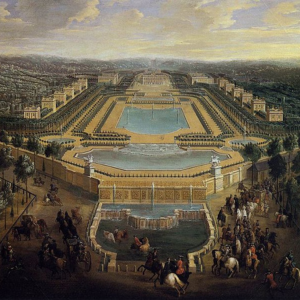 |
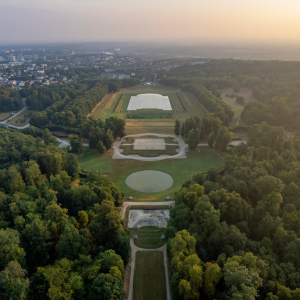 |
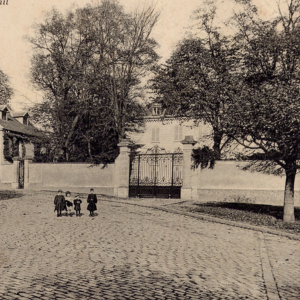 |
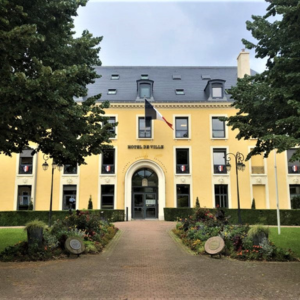 |
| Pierre-Denis Martin, View of the Château de Marly | Parc de Marly ©EPV | Place du Chenil ©gtelletlarente | Marly-le-Roi Mairie |
The village of Marly-le-Roi can also be explored through its beautiful parks and its forest of over 1,700 hectares. For example, the Parc du Chenil behind the Hôtel de Ville is a 3-hectare arboretum with a rich variety of tree species. It was created in 1663 by Louis XIV. You’ll also find the Parc Jean Witold, where the people of Marly-le-Roi like to meet. There’s also the Maillol Garden next to the Grande Rue. The houses built between 1660 and 1700 and the Grande Rue, with its many charming restaurants and shops, provide a picturesque backdrop for a stroll.
Painters’ impressions in the village of Marly-le-Roi
The village of Marly-le-Roi was also a place of inspiration for Impressionist painters, notably Alfred Sisley, who lived at 4 Avenue de l’Abreuvoir from 1875 to 1878. Marie Cassatt stayed here from July to October 1880, in a house overlooking the same Abreuvoir.
Alfred Sisley at Marly-le-Roi
During his long stay in Louveciennes and Marly, Alfred Sisley (1839-1899) painted many pictures. They mainly depicted snow-covered landscapes, as he was interested in scenes that played with light. The same subjects recurred frequently: the Abreuvoir, receding roads, the banks of the Seine and the Machine de Marly. The floods at nearby Port-Marly in 1876 provided him with an ideal subject from which he drew effects of shimmering surfaces and windswept skies.
One of his most unusual works is La Forge à Marly-le-Roi (The Forge in Marly-le-Roi). At number 48 Grande Rue, this landscape painter ‘par excellence’ captures the intimate atmosphere that emanates from this interior. In fact, the forge and the human activity that is happening there are enhanced by the light coming from both a dusty window, one pane of which has been sealed shut, and the glowing fire in the forge.
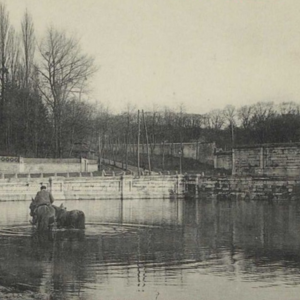 |
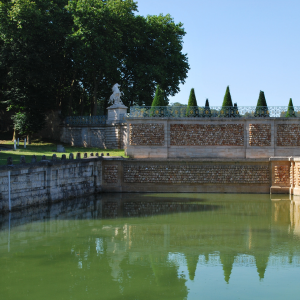 |
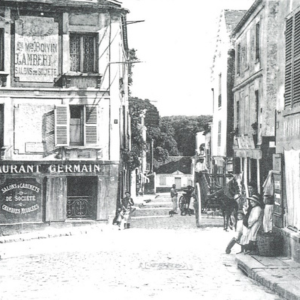 |
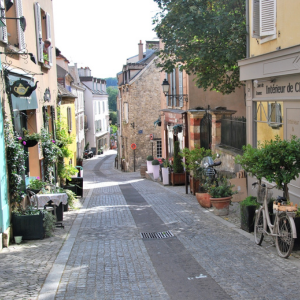 |
Mary Cassatt in Marly-le-Roi
As mentioned above, Mary Cassatt was also in Marly during this time.
The art of Mary Cassatt (1844–1926) was influenced by both Manet and Degas with her openness to modernity, which she achieved through her choice of subjects, which were those of her friends and masters. She liked to depict scenes from the daily lives of her friends and family, in settings conducive to relaxation and leisure. She often painted them from an elevated perspective, inviting the viewer into their intimacy.
The village of Marly-le-Roi continues to provide us with moments of relaxation and conviviality in an almost unchanged setting.
Spotlighting the village of Marly-le-Roi today
You can continue to stroll along the cobblestones of the Grande Rue to the leisurely pace of passing visitors. Stop off in the park for a family stroll. Play a treasure hunt through the statues and ponds. Have fun learning at the Musée du Domaine Royal de Marly!
And all year round, enjoy the Giant Cluedo® games organised by the Saint Germain Boucles de Seine Tourist Office. You can also take part in open days at artists’ studios, dramatised tours and spectacular shows during the Fête de Marly.
Your stay in the village of Marly-le-Roi
Culture, strolling the streets, contemplating the landscapes and gourmet delights all come together in the village of Marly-le-Roi. Come and experience timeless moments. And to make the pleasure last, why not stay a few days in the area? Take advantage of the many restaurants in the village and the accommodation, on your own, with your partner or with your family.
